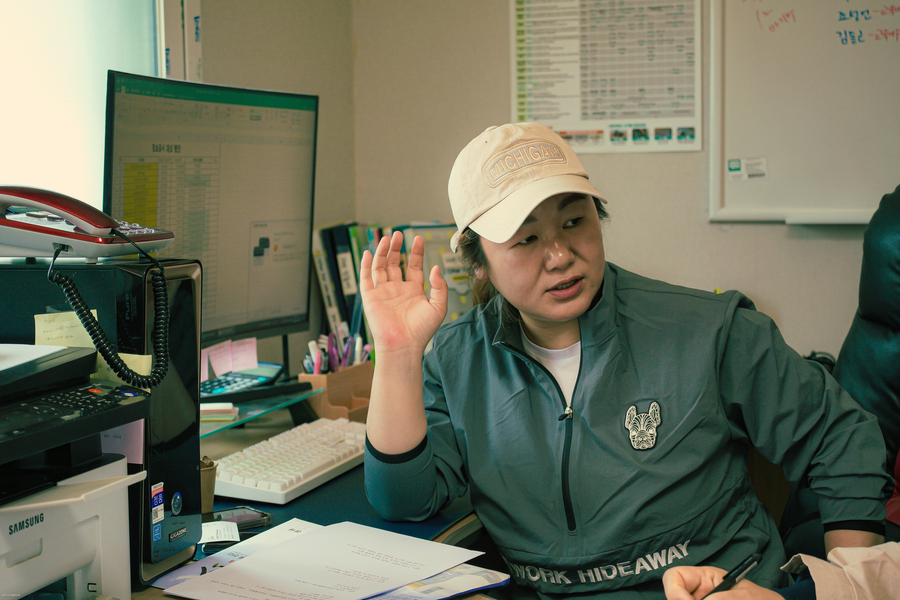Webzine
One Grain of Wheat, A Better Tomorrow – Visiting the Production Site of Nenia Products
2025.07.29Interview: Korean Wheat Producer – CEO Hwang Yoon-mi of Hoseong Agricultural Corporation
Haenam is the largest basic local government unit in Jeolla Province. With extensive reclaimed land, it has the widest area of arable land in the country and is also located at the southernmost tip of mainland Korea, aside from the islands. This is the home of the well-known "Land's End Village" (Ddangkkeut Maeul).
Haenam borders Mokpo and Yeongam to the north, Wando and Jindo to the south, Gangjin to the east, and across the sea to the west lies Shinan. It's famous for its cabbage, sweet potatoes, seaweed, and abalone — and also plays a significant role as a production site of Korean wheat.
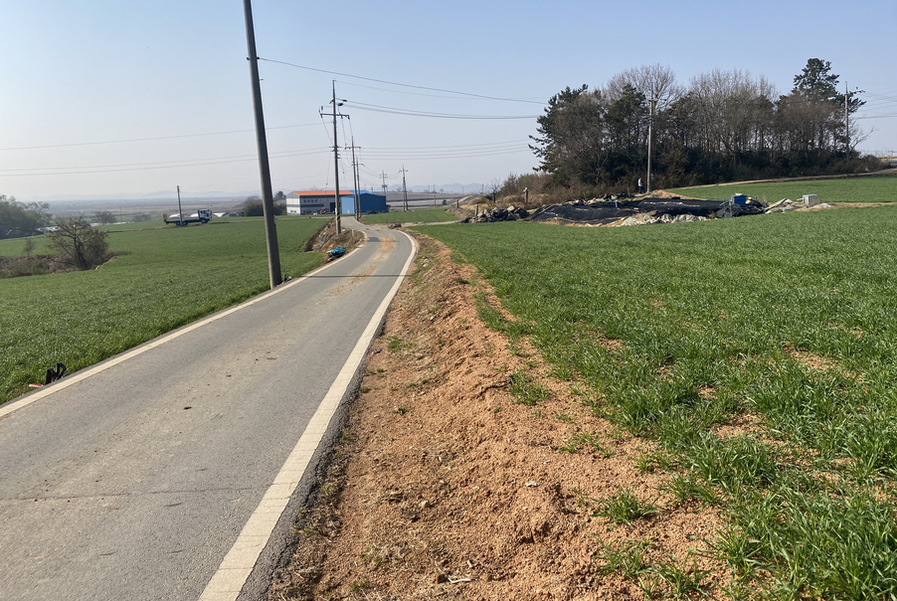
Wheat is an ancient crop cultivated by humans since the Neolithic era. Along with rice, it is one of the two major global staple crops. In the East, wheat is used as a supplementary grain, while in the West, it is a staple food. It is believed to have been cultivated on the Korean Peninsula even before the Three Kingdoms period.
In 1965, Korea's wheat self-sufficiency rate was 27%, but it plummeted due to massive U.S. aid, liberalization of flour and wheat imports, and the government's cessation of wheat purchases in 1984. By the 1990s, even native Korean wheat seeds had disappeared. The movement to revive Korean wheat began with the establishment of the “Korean Wheat Revival Movement Headquarters” in 1991. Since the National Assembly passed the Wheat Industry Promotion Act in 2019, the government, which had been largely passive about domestic wheat farming, has now established and implemented a basic development plan for the wheat industry.
Among Nenia’s wide range of processed foods, all products containing wheat use organic, pesticide-free Korean wheat as their main ingredient. The variety Nenia purchases is Geumgang wheat, which has a high protein content. In early April, when camellias and cornelian cherry blossoms are in full bloom, we visited the Korean wheat fields in Haenam, where the grains are large and robust. Hoseong Nongsan, which supplies eco-friendly Korean wheat to Nenia, is located in San-i-myeon, Haenam-gun, Jeollanam-do. In the fields leading from Mokpo to San-i-myeon, Korean wheat and barley blanket the spring landscape in green. The vastness of the fields makes it seem impossible to manage by hand alone.
Hoseong Nongsan Agricultural Cooperative Corporation (hereinafter Hoseong Nongsan) was founded by CEO Hwang Yoon-mi on January 8, 2021. The cooperative includes 40 to 50 farming members. It harvests about 500 tons of eco-friendly Korean wheat annually, 400 tons of which are contract-grown for Nenia. Starting in 2025, the government will begin providing direct subsidies for wheat farming.
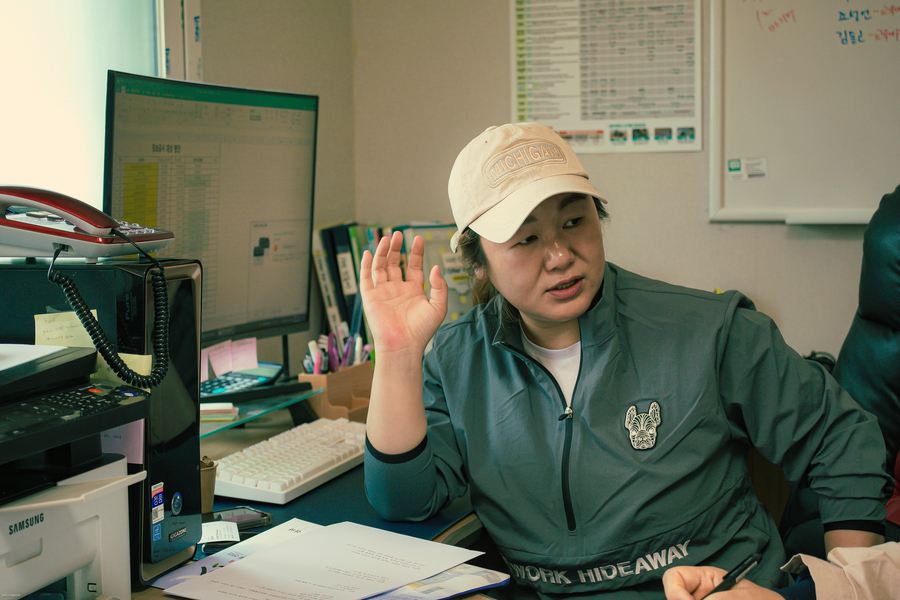
△ Hwang Yoon-mi, CEO of Hoseong Nongsan (Photo = Nenia)
Meeting CEO Hwang Yoon-mi was surprising—she didn’t match the traditional image of a “farmer.” She is a young woman in her early 40s, and her clear, energetic voice seemed to awaken the fields of Haenam. She formed a dynamic connection with the region: in 2002, around the age of 20, she visited Haenam, met her husband, got married, and naturally began farming. She started growing Korean wheat about 10 years ago. In the first couple of years, without any sales channels, much of the harvest ended up as cattle feed or compost. But things changed when a purchasing agent from Nenia visited to secure a production site, leading to a contract farming relationship. This removed the burden of finding buyers and allowed her to focus on stabilizing quality.
After establishing the agricultural cooperative, CEO Hwang became a strong support for local farmers. Older farmers especially struggled to sell their produce independently—this was even harder for small-scale growers. Through Hoseong Nongsan, eco-friendly Korean wheat is now contract-grown for Nenia, conventional wheat is sold through government reserves, and other crops are sold to different distribution companies. For elderly farmers in their 70s and 80s who lack machinery or find it difficult to operate, Hoseong Nongsan provides farming support using tractors and drones. Farmers can request help with planting, pest control, and harvesting. Hwang explained, “When the cooperative helps farmers find buyers and eases their worries, the smiles on their faces make it all worthwhile.” San-i-myeon, where Hoseong Nongsan is located, is a large area within Haenam-gun, with many extensive farmlands. This is due to the vast tracts of reclaimed land from the sea.
Korean wheat planting is divided into fall and spring sowing, depending on the climate of each region. At Hoseong Nongsan, all farmers do fall planting between November and December. Fall sowing results in better germination, growth, and higher yields than spring planting. After harvesting the wheat in early June, farmers plant cabbage, practicing double cropping to boost income.
Wheat planted in the fall is known to be more resistant to pests and diseases during the winter. However, heavy rain can lead to fusarium head blight (a fungal disease). When it rains, pest control must be done the very next day. Hwang says she makes sulfur-based solutions and sprays them using drones. If fusarium isn't handled properly, it can completely destroy the wheat crop and make harvesting impossible. Since the land was previously used for cabbage farming, organic matter such as cabbage leaves naturally enriches the soil. While they sometimes use oil cake fertilizer, they rarely apply base or topdressing fertilizers.
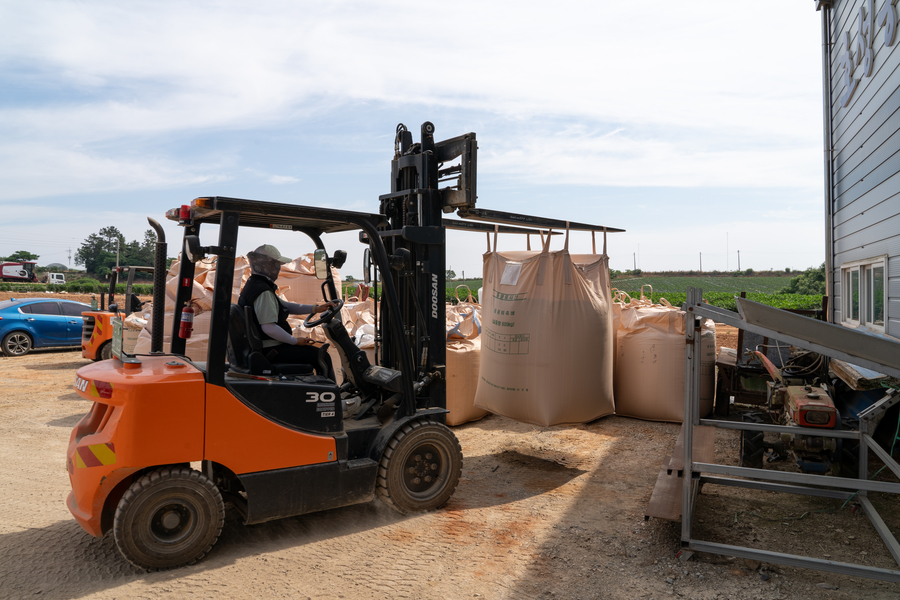
CEO Hwang says that the soil in Haenam is the best in the country for farming. Having traveled to other Korean wheat-producing regions such as Jeonbuk, Jindo, and Hampyeong, she says the grain quality of Haenam wheat is superior. She explained that Haenam wheat is grown only in dry fields (not paddy fields), and that the soil conditions are especially favorable for wheat cultivation.
Recently, the government has stepped up efforts to promote the wheat industry, expanding production zones, increasing public reserves, and boosting consumption by subsidizing processing costs (such as for milling). From a farmer’s perspective, Hwang finds these policies very helpful. Though the purchase criteria are strict, stable prices and subsidies are a great support.
In 2024, Hoseong Nongsan was selected as one of the “Outstanding Domestic Wheat and Soybean Production Zones”, an initiative hosted by the Ministry of Agriculture, Food and Rural Affairs and organized by the Korea Agro-Fisheries & Food Trade Corporation (aT). It was also chosen for the Ministry’s farm equipment support program, receiving agricultural machinery such as a CLAAS Combine and tractors. Hwang expressed her joy, saying, “We’ve worked so hard over the years, and now it finally feels like our efforts are being rewarded.”
When asked what she hopes from the government, Hwang pointed out issues such as delays in the wheat purchasing schedule by aT, which causes difficulties. She also criticized a policy regarding crop insurance, which disqualifies farmers from receiving compensation if they harvest even a small amount of wheat after a disaster or pest outbreak, calling it unrealistic and in need of reform.
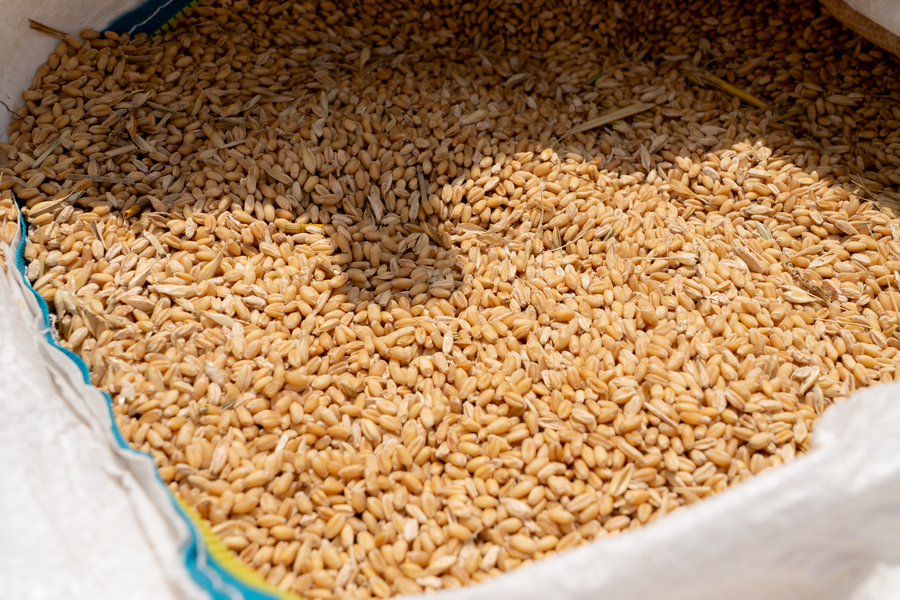
△ Wheat grains purchased by Hoseong Nongsan. With the belief that a single grain of wheat can lead to a better tomorrow, we are taking one step at a time toward building a sustainable future, even in the face of the climate crisis. (Photo = Nenia)
CEO Hwang’s bold and energetic presence breathes life into the fields of Haenam. The grains of wheat sown by her and the local farmers are transformed through Nenia into eco-friendly processed foods that make their way into school lunches, military meals, and onto the dining tables of everyday citizens.
The belief that a single grain of wheat can shape a better tomorrow. Even in the face of the climate crisis, we continue to take steps toward a sustainable future.
<The story continues in the next article: “Nenia Bread”>
Edited by the Nenia Web Magazine Editorial Team
April 8, 2025


